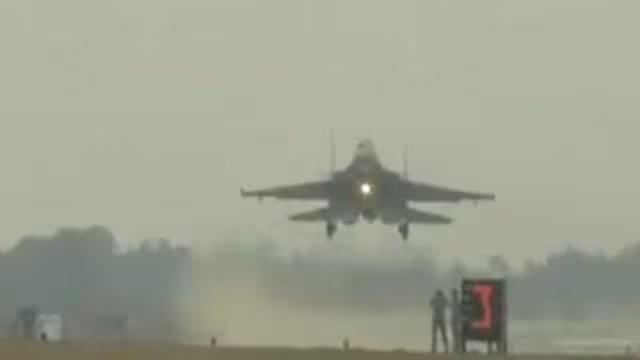
Why is IAF conducting fighter jets’ landing & take-off drill at Ganga Expressway in UP?
The Indian Air Force (IAF) recently conducted a unique exercise at the Ganga Expressway in Uttar Pradesh, where fighter jets like the Rafale conducted take-off and landing drills during the day and night. This exercise was a significant milestone in the history of India’s aviation sector, as it marked the first time an airstrip on an expressway was used to handle both day and night landings of jets. But why was this exercise conducted, and what does it mean for the country’s national security?
The Ganga Expressway, which connects the states of Uttar Pradesh and Haryana, is a 594-kilometer long highway that was inaugurated in 2021. The expressway is designed to reduce travel time between the two states and provide a faster and more efficient mode of transportation. However, in recent years, the IAF has been exploring ways to utilize the expressway as an alternative runway during times of war or national emergencies.
The exercise conducted by the IAF on the Ganga Expressway was aimed at assessing the expressway’s potential as a makeshift airstrip. The IAF used its Rafale fighter jets to conduct take-off and landing drills during the day and night, simulating real-life scenarios. The exercise was a test of the expressway’s infrastructure, including its lighting, navigation systems, and runway surface.
The IAF has been exploring the use of alternative runways and airstrips for several years now. With the rapid advancements in military technology, the need for traditional airbases is diminishing, and the IAF is looking for ways to maintain its operational readiness in remote or hostile areas. The Ganga Expressway, with its strategic location and modern infrastructure, presents an attractive option for the IAF.
The exercise conducted on the Ganga Expressway is part of a larger effort by the IAF to enhance its operational capabilities and responsiveness. The IAF has been working on a range of initiatives, including the development of new technologies, the modernization of its aircraft fleet, and the enhancement of its logistics and supply chain management.
The use of the Ganga Expressway as an alternative runway also has implications for the country’s national security. In the event of a national emergency or war, the IAF may need to use the expressway as a makeshift airstrip to maintain its operational readiness. The exercise conducted by the IAF demonstrates its ability to adapt to changing circumstances and to use unconventional assets to achieve its objectives.
Moreover, the exercise highlights the importance of infrastructure development in the country’s national security strategy. The Ganga Expressway, with its modern infrastructure and strategic location, presents a model for the development of similar infrastructure projects in other parts of the country.
The exercise conducted by the IAF on the Ganga Expressway is a significant development in the country’s aviation sector. It demonstrates the IAF’s ability to adapt to changing circumstances and to use unconventional assets to achieve its objectives. The exercise also highlights the importance of infrastructure development in the country’s national security strategy.
In conclusion, the IAF’s exercise on the Ganga Expressway is a significant development in the country’s aviation sector. It demonstrates the IAF’s ability to adapt to changing circumstances and to use unconventional assets to achieve its objectives. The exercise also highlights the importance of infrastructure development in the country’s national security strategy.
Source:






